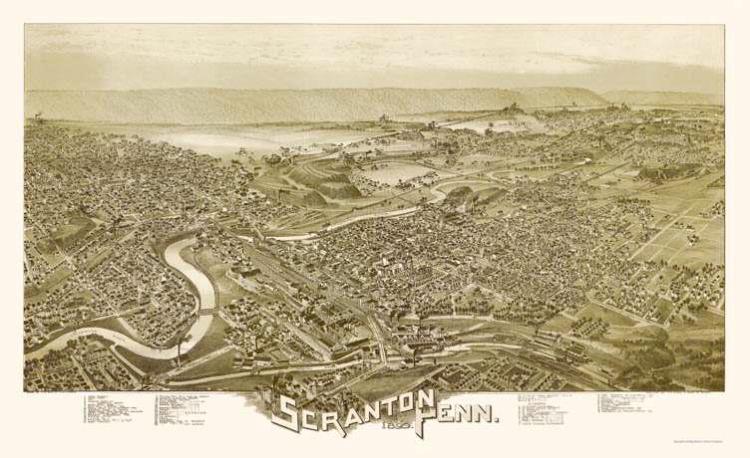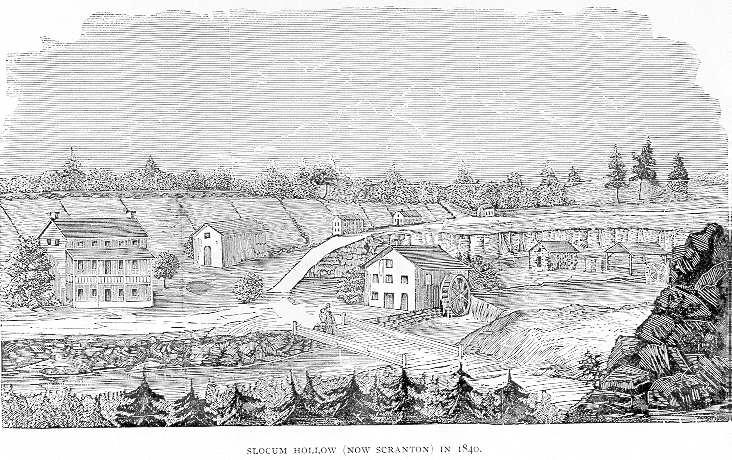
The maternal half of my family tree settled into Scranton, PA sometime in the mid-19th century. The Harper side (her father) came to Scranton after emigrating to, and living in Philadelphia while the Kunde side (her mother) emigrated primarily from present day Germany.
My personal memories of Scranton, dating mostly from the 1960’s were always of a city, a city of coal mines, slag heaps, and Nay Aug Park. Recently, I came across an Honors Thesis in History from a student at Georgetown Univ. that has given me a new perspective.
“In the eighteenth century, the area which is now Scranton was known as Capoose or Capouse, after the chief of the Monsey Indians, the original inhabitants of the area. By 1840, the present-day boundaries of Scranton contained four villages: Slocum Hollow (sometimes known as Unionville), Razorville (later Providence), Hyde Park, and Bucktown (later Dunmore). In 1845, the name Slocum Hollow was changed by William Henry to Harrison (in honor of Presidential candidate William Henry Harrison), and the 1850 establishment of a post office again changed the name to Scrantonia. In 1851, postmaster John W. Moore finally changed the name to Scranton, and Scranton later annexed Providence, Hyde Park and Dunmore.”

In 1840, Slocum Hollow, which is now Scranton, and which would grow into one of the most successful industrial centers in the United States within fifty years, “consisted of 100 people, five dwellings, a cooper shop, a school-house, a saw-mill, and a grist-mill.” –History of Luzerne, Lackawanna and Wyoming Counties, Pennsylvania. New York: W.W. Munsell & Munsell Co., 1880. Page 394.
Scranton’s growth was largely fueled by foreign-born immigrants from Ireland, Germany, Wales and England. The population ballooned from 100 in 1840 to 1,396 in 1848, and 2,730 in 1850. A census taken by the Lackawanna Iron and Coal Company found that of the 4,241 residents in 1854, only 1,151, or 27 percent, were native-born Americans, while 42 percent of residents were Irish, 19 percent were German, ten percent were Welsh, and two percent were English immigrants. In1859, only about half of the over 12,000 residents were thought to be native-born Americans.
Scranton in 1860: Population 9,223 – Scranton is laid out with regularity, nearly all the streets crossing each other at right angles. Business is thriving, and many spacious brick buildings are being erected. The town is supplied with water from the Lackawanna River, being forced up by steam-power into a reservoir, and thence distributed in pipes through the burrough [sic].
The streets are lighted by gas, and the sidewalks are paved with plank and stone. The place contains 59 groceries and stores of all descriptions, 18 stationary steam engines, 10 churches, 2 printing offices, 4 foundries and machine-ships, 2 bakeries, 7 hotels, 4 smelting furnaces, 1 rolling-mill, 1 planing mill, 2 banking-houses, 6 insurance agencies, 2 flouring mills, each with 4 run of stone, 1 brewery, 2 resident dentists, 12 doctors, and 13 lawyers.